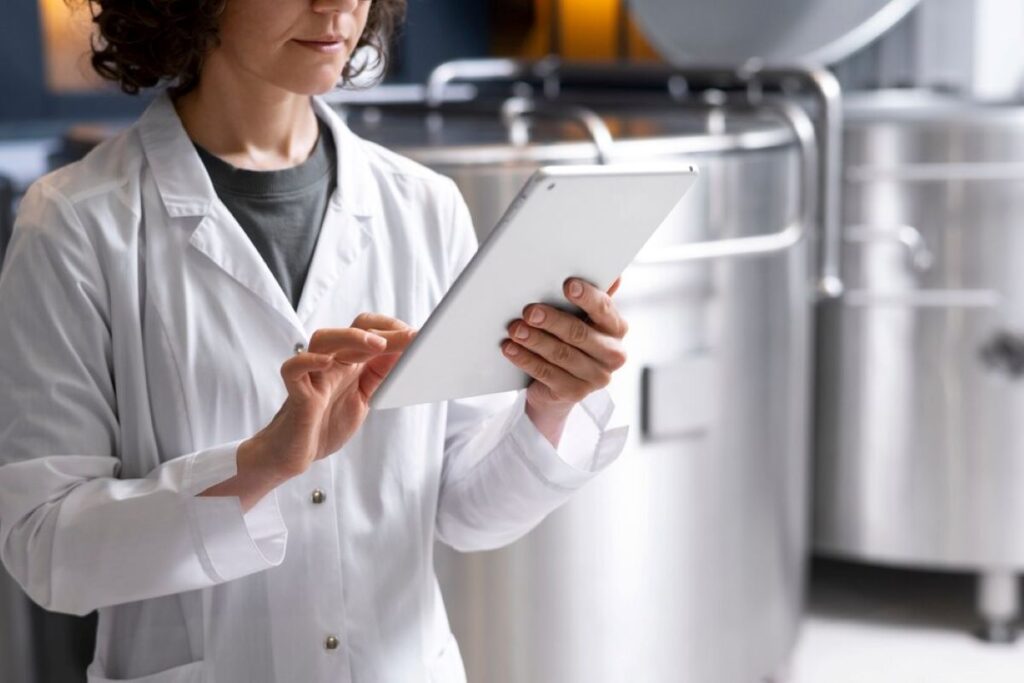How Wireless Temperature Monitoring Enhances Food Safety in Real Time
In the world of food safety, maintaining the correct temperature is paramount. Whether in storage, transportation, or preparation, temperature control can make the difference between safe food and foodborne illnesses. With the advent of technology, wireless temperature monitoring systems have emerged as a game-changer in ensuring food safety. This article explores how these systems enhance food safety in real time, providing peace of mind for businesses and consumers alike.
The Importance of Temperature Control in Food Safety
Temperature control is a critical component of food safety protocols. When food is stored or transported outside the recommended temperature range, the risk of bacterial growth increases significantly. Pathogens such as Salmonella and E. coli thrive in environments that are too warm, leading to potential health risks for consumers.
Understanding the Temperature Danger Zone
The “danger zone” for food safety is typically defined as temperatures between 5°C and 60°C. Within this range, bacteria can multiply rapidly, doubling in number in as little as 20 minutes. It is crucial for food businesses to monitor temperatures closely to avoid entering this danger zone, especially during critical processes such as cooking, cooling, and reheating. For instance, when cooling cooked foods, it is essential to do so quickly to bring the temperature down through this danger zone as swiftly as possible. Techniques such as using shallow containers or ice baths can significantly reduce the time food spends in the danger zone, thereby minimising the risk of bacterial growth.
Regulatory Compliance and Best Practices
Food safety regulations in Australia, governed by Food Standards Australia New Zealand (FSANZ), require businesses to adhere to strict temperature control measures. Failure to comply can result in severe penalties, including fines and loss of reputation. Implementing effective monitoring systems not only ensures compliance but also fosters a culture of safety within the organisation. Regular training sessions for staff on the importance of temperature control and the proper use of thermometers can further enhance food safety practices. Additionally, maintaining a detailed log of temperature checks can serve as a valuable resource for audits and inspections, demonstrating a commitment to upholding the highest standards of food safety.
Moreover, the integration of technology in temperature monitoring has revolutionised the food industry. Smart thermometers and temperature logging devices can provide real-time data, alerting staff immediately if temperatures stray into the danger zone. This proactive approach not only safeguards public health but also helps businesses optimise their operations by reducing food waste and ensuring quality. As consumers become increasingly aware of food safety issues, businesses that prioritise temperature control will not only comply with regulations but also gain a competitive edge in the market.
What is Wireless Temperature Monitoring?
Wireless temperature monitoring involves the use of sensors that transmit temperature data in real time to a central system, allowing for continuous oversight of food storage and handling conditions. These systems can be integrated with alarms and alerts, notifying staff of any deviations from the set temperature thresholds.
How Wireless Systems Work
Wireless temperature monitoring systems typically consist of several components: temperature sensors, a central monitoring unit, and software for data analysis. Sensors are strategically placed in refrigerators, freezers, and other critical areas to collect temperature data. This data is then transmitted wirelessly to the central unit, which can be accessed via a computer or mobile device.
Advantages Over Traditional Monitoring Methods
Traditional temperature monitoring methods, such as manual checks, are often time-consuming and prone to human error. Wireless systems, on the other hand, provide continuous monitoring without the need for constant manual intervention. This not only saves time but also ensures that temperature readings are accurate and up-to-date.
Real-Time Alerts and Notifications
One of the standout features of wireless temperature monitoring is the ability to receive real-time alerts. When temperatures deviate from the acceptable range, the system can send immediate notifications via SMS or email to designated staff members. This allows for quick action to be taken, minimising the risk of food spoilage and potential health hazards.
Proactive Response to Temperature Fluctuations
Real-time alerts enable businesses to respond proactively to temperature fluctuations. For instance, if a freezer door is left ajar or if there is a power outage, staff can be alerted instantly. This capability is crucial in preventing food waste and ensuring that products remain safe for consumption.
Data Logging and Historical Analysis
In addition to real-time alerts, wireless temperature monitoring systems also provide comprehensive data logging capabilities. This allows businesses to track temperature trends over time, facilitating better decision-making and operational improvements. Historical data can be invaluable for identifying recurring issues, optimising storage practices, and ensuring compliance with food safety regulations.

Enhancing Operational Efficiency
Implementing wireless temperature monitoring systems can significantly enhance operational efficiency within food businesses. By automating temperature checks, staff can focus on other critical tasks, leading to improved productivity and reduced labour costs.
Streamlining Staff Responsibilities
With automated monitoring, the need for manual temperature checks is greatly reduced. Staff can be assigned to more value-added activities, such as food preparation and customer service, rather than spending time on routine temperature audits. This shift not only boosts morale but also enhances overall service quality.
Integration with Other Systems
Many wireless temperature monitoring systems can be integrated with existing management software, creating a seamless flow of information across the organisation. This integration allows for better inventory management, ensuring that products are rotated correctly and reducing the likelihood of spoilage.
Case Studies: Success Stories in Food Safety
Several food businesses have successfully implemented wireless temperature monitoring systems, resulting in improved food safety and operational efficiency. These case studies illustrate the tangible benefits of adopting this technology.
Case Study 1: A Leading Supermarket Chain
A prominent supermarket chain in Australia faced challenges with maintaining consistent temperatures in their cold storage facilities. After implementing a wireless temperature monitoring system, they experienced a significant reduction in food spoilage and waste. The real-time alerts allowed staff to address temperature issues immediately, ensuring that products remained safe for customers.
Case Study 2: A Local Restaurant
A local restaurant implemented a wireless temperature monitoring system to enhance their food safety practices. The system provided them with historical data that helped identify patterns in temperature fluctuations. As a result, the restaurant was able to optimise their storage practices, leading to a 30% reduction in food waste and an increase in customer satisfaction.
Challenges and Considerations
While wireless temperature monitoring offers numerous benefits, there are challenges and considerations that businesses should keep in mind when implementing such systems.
Initial Investment and Costs
The initial investment for wireless temperature monitoring systems can be substantial. Businesses must consider the costs associated with purchasing sensors, installation, and ongoing maintenance. However, the long-term savings from reduced food waste and improved compliance often outweigh these initial expenses.
Training and Adaptation
Staff training is essential to ensure the successful implementation of wireless temperature monitoring systems. Employees must be familiar with how to use the technology effectively and understand the importance of temperature control in food safety. Investing in training can help mitigate resistance to change and foster a culture of safety.
The Future of Food Safety Monitoring
The future of food safety monitoring is undoubtedly leaning towards more advanced technologies. As wireless temperature monitoring systems continue to evolve, businesses can expect even greater integration with artificial intelligence and machine learning. These advancements will enable predictive analytics, allowing for even more proactive management of food safety.
Embracing Technological Advancements
As technology continues to advance, food businesses must be willing to embrace these changes to remain competitive. The integration of smart technologies in food safety monitoring will not only enhance safety but also improve overall operational efficiency.

Consumer Expectations and Transparency
Today’s consumers are increasingly concerned about food safety and transparency. Implementing wireless temperature monitoring systems can help businesses meet these expectations by providing verifiable data on food safety practices. This transparency can enhance consumer trust and loyalty, ultimately benefiting the bottom line.
Conclusion
Wireless temperature monitoring systems represent a significant advancement in food safety practices. By providing real-time data, alerts, and historical analysis, these systems enhance operational efficiency while ensuring compliance with food safety regulations. As technology continues to evolve, businesses that adopt these systems will not only safeguard public health but also position themselves as leaders in the industry.
Ultimately, investing in wireless temperature monitoring is an investment in the future of food safety. As the industry continues to adapt to changing consumer expectations and regulatory requirements, embracing these technologies will be essential for success.
Related : Food Safety Temperature Monitoring: What It Is and Why It Matters

